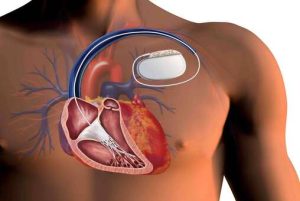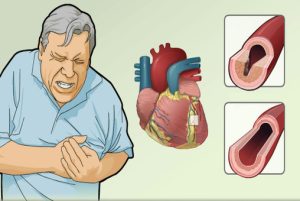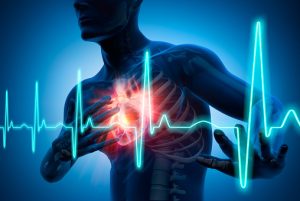Specialties
How Coronary Angioplasty Can Help Open Up Clogged Arteries?
- Coronary Angioplasty
- Regain Pace with Pacemaker
- Congenital Heart Disease
- Heart Failure
What Is Coronary Angioplasty Procedure?
Coronary angioplasty is a procedure used to treat narrowed or blocked coronary arteries. The word “angioplasty” means “to open up a clogged artery.” Coronary angioplasty is also known as percutaneous coronary intervention (PCI). During the coronary angioplasty procedure, a long, thin tube called a catheter is inserted into a blood vessel in the arm or leg and threaded through the blood vessels to finally reach the heart. Once the catheter is in place, a small balloon at the tip of the catheter is inflated. This opens up the blocked artery and improves blood flow to the heart. In some cases, a small metal coil called a stent is also placed in the artery to help keep it open. Coronary angioplasty is usually done in a hospital cardiac catheterization laboratory or in an operating room. The procedure usually takes about an hour. You will likely stay in the hospital for one to two days after the procedure.

Why Is It Performed?
Coronary angioplasty is usually done when there is a blockage in one or more coronary arteries that supply blood to the heart. The blockage is usually caused by plaque formation inside the arteries. Plaque is generally made up of fat, cholesterol, calcium, and other substances found in the blood. This is an abnormal heart condition also known as atherosclerosis. Over time, plaque can harden or rupture. This can cause a heart attack or sudden death. Coronary angioplasty can improve blood flow to the heart and relieve chest pain. The procedure can also be done to improve blood flow to the heart in people who are having a heart attack. Coronary angioplasty is a safe and effective procedure. But, like all medical procedures, there are risks associated with coronary angioplasty. The most common risks associated with coronary angioplasty are:
Chest pain
Heart Attack
Stroke
Blood clots
Damage to the artery or re-narrowing
Death
What To Expect After A Successful Coronary Angioplasty?
After successful coronary angioplasty, it is normal to feel some relief from your symptoms. This is because the procedure has helped to improve blood flow to your heart. You may also feel a sense of tightness or pressure in your chest. This is caused by the balloon that was used during the procedure and is completely normal. You will be closely monitored in the hospital for the first 24 hours after the procedure. During this time, you may experience some minor discomfort and bruise for which you may be given pain meds. It is important to keep the area where the catheter was inserted clean and dry. You will be asked to return to the hospital for a follow-up appointment within a few weeks. At this appointment, your doctor will check to see how well the angioplasty has worked and discuss any lifestyle changes that you need to make.
How To Keep Yourself Heart Healthy After The Angioplasty & Stent Placement?
For any new symptoms, you should call your cardiologist or treating physician immediately. Also one should focus on the following to ensure a healthy heart:
Complete abstinence from smoking
Continue working on reducing cholesterol levels
Consume a diet low in saturated fats
Routine exercise to ensure maintaining healthy weight
Take medications as prescribed
Regain Pace with Pacemaker Administered by Primecare
A pacemaker is a small, battery-operated device that helps regulate the beating of your heart. It is usually implanted under the skin on your chest, with wires that go to your heart. The pacemaker keeps an eye on your heart rate and sends electrical signals to help it beat at a regular pace. If your heart rate is too slow, the pacemaker gives it a jolt of electricity to get it going. If your heart rate is too fast, the pacemaker slows it down. Most pacemakers have one or two settings, but some have three. You might need a pacemaker if you have a heart condition that causes your heart to beat too slowly or irregularly. A pacemaker can also be used to treat heart failure. If you have a pacemaker, you’ll need to have regular checkups to make sure it works properly. You would need to avoid certain activities, such as contact sports, that could damage the device.

How Does a Pacemaker Work?
The pacemaker has two main parts: a battery and one or more electrodes. The battery provides the electrical energy that’s used to create the electrical pulses. The electrodes are thin wires that are placed in the heart. They deliver the electrical pulses to the heart muscle. Pacemakers are usually implanted during a minor surgical procedure. The surgeon makes a small incision in the chest and attaches the pacemaker to the heart. Pacemakers can be used to treat a number of heart conditions. For example, they are often used to treat bradycardia, which is a heart rate that’s too slow. Pacemakers can also be used to treat tachycardia, which is a heart rate that’s too fast. Pacemakers are usually implanted in people who have an irregular heartbeat. However, they can also be used to treat people who have a regular heartbeat but are at risk of developing arrhythmia.
Who Needs a Pacemaker?
For people with heart conditions that cause an irregular heartbeat, a pacemaker can be a lifesaver. Pacemakers are most commonly used to treat bradycardia, a heart condition in which the heart beats too slowly. They can also be used to treat other heart conditions, such as heart block. Anyone with a heart condition that causes an irregular heartbeat may benefit from a pacemaker. If you have a heart condition that is causing your heart to beat irregularly, talk to your doctor to see if a pacemaker is right for you.
About Congenital Heart Defects
There are many different types of congenital heart defects, and they can range from mild to severe. The most common congenital heart defects include atrial septal defect (ASD), ventricular septal defect (VSD), and patent ductus arteriosus (PDA). Many congenital heart defects can be treated with surgery, medication, or lifestyle changes, but some may require more invasive treatment(s).

3 Common Types of Congenital Heart Defects
There are many different types of heart defects, but some are more common than others. Here are a few of the most common types of heart defects:
ASD: Atrial septal defect is a hole in the wall between the two upper chambers of the heart. This hole allows blood to flow from the left side of the heart to the right side, instead of going to the lungs to pick up oxygen.
VSD: Ventricular septal defect is a hole in the wall between the two lower chambers of the heart. This hole allows blood to flow from the left ventricle to the right ventricle, instead of going to the lungs to pick up oxygen.
PDA: Patent ductus arteriosus is a condition in which the ductus arteriosus, a blood vessel that connects the aorta to the pulmonary artery, does not close after birth. This vessel allows blood to bypass the lungs and go directly to the aorta.
All three of these defects can be treated with surgery. The type of surgery will depend on the size and location of the defect.
Device Closure Technique
The device closure technique is a minimally invasive procedure used to treat congenital heart defects, such as ASD, VSD, and PDA. This technique involves placing a device, such as a catheter, into the heart through a small incision. The device is then used to close the defect. This technique has many advantages over traditional open-heart surgery, which is often used to treat these defects. First, it is much less invasive, which means that there is less risk of complications and a shorter hospital stay. Second, it is a less costly procedure. Finally, it has a high success rate, with most patients experiencing significant improvement in their condition after the procedure. If you or your child has been diagnosed with a congenital heart defect, the device closure technique may be an option for treatment. This technique can provide significant benefits, and it is important to discuss all of your options with your doctor to make sure you make the best decision for your child’s health.
What is Heart Failure & Its Causes?
Your heart is the most vital organ that pushes blood containing all vital nutrients as well as the much-needed oxygen towards all your body tissues. Without a properly functioning heart, you cannot imagine being alive. But did you know that your heart can also fail? Heart failure is a condition in which your heart can’t pump enough blood to meet your body’s oxygen and needs for other vital nutrients carried and transported by the blood flow towards all body tissues. It can occur suddenly, or it can happen gradually over time. However, heart failure doesn’t mean that it has stopped working altogether. It just means that it’s not working as it should. There are many different causes of heart failure which include:

Coronary artery disease:
This is a condition in which the arteries that supply blood to your heart become narrowed or blocked.
High blood pressure:
This is a condition in which the pressure of your blood against the walls of your arteries is too high.
Heart valve disease:
This is a condition in which the valves that control the flow of blood through your heart don’t work properly.
Congenital heart defects:
These are defects that are present at birth.
Cardiomyopathy:
This is a condition in which the muscle of your heart is weakened or damaged.
Pulmonary embolism:
This is a condition in which a blood clot blocks the blood flow to your heart.
Arrhythmias:
These are abnormal heart rhythms that can make it difficult for your heart to pump blood.
Symptoms of Heart Failure!
Shortness of breath with exercise or while at rest
Swollen legs, ankles, and feet
Fatigue
Weakness
Reduced ability to exercise
Fast or irregular heartbeat
Wheezing or persistent cough with white or pink phlegm that is blood tinged
Increased nighttime urination or (nocturia)
Chest pain
Ascites
If you have congestive heart failure, you may feel like you can’t catch your breath, even when you’re at rest. This is called dyspnea, and it can be a symptom of both mild and severe CHF. When your heart isn’t pumping blood as efficiently as it should, fluid can back up into your lungs. This makes it even harder to breathe and can lead to a dangerous buildup of fluid in your lungs (pulmonary edema). CHF can also cause fluid to build up in other parts of your body, such as your ankles, legs, or abdomen. This is called edema. In some cases, CHF can cause your heart to beat too fast or irregularly (arrhythmia).
How to Treat Congestive Heart Failure?
The treatment for heart failure typically depends on the severity of symptoms. A good cardiologist can prescribe you various medicines to treat your symptoms first before considering a surgical option. He will recommend surgery only if it is necessary. It is a good treatment option for those with severe symptoms of congestive heart failure to help improve the overall heart’s pumping ability. There are several types of surgeries that can be used to treat congestive heart failure, and the type of surgery that is right for you will depend on your individual case. Consult a professional cardiologist/cardiac surgeon who will be the best person to pursue the best treatment option in order to treat your condition successfully.
